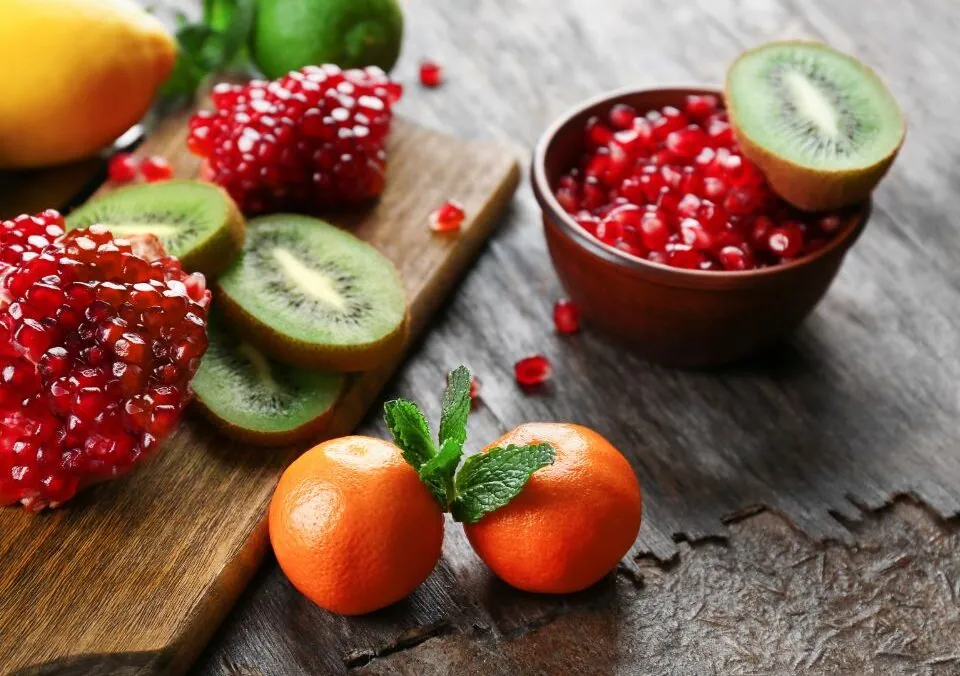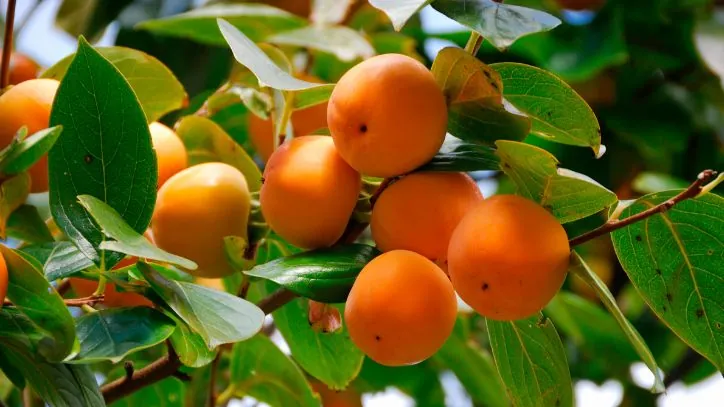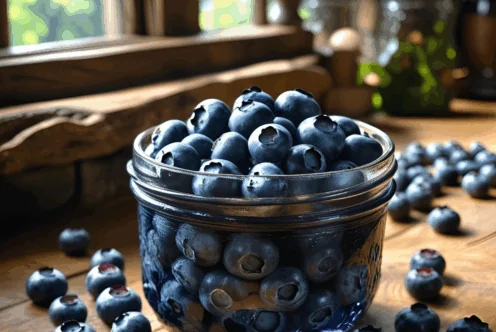Blog
Try These Unique Winter Fruits! Most Even Grow in Arizona!

When it comes to winter fruit trays, many of us default to the familiar standbys: red and green grapes, apples, orange slices, pineapple chunks, and assorted berries. While these fruits are certainly delicious and nutritious, they barely scratch the surface of what’s available in the winter months—especially in a warm climate like Arizona’s. This desert state boasts a variety of unique fruits that not only add stunning visual appeal to a fruit tray but also offer a wealth of vitamins, minerals, and exceptional flavors.
In this detailed exploration, we will dive into seven unique winter fruits that thrive in Arizona’s climate. Each of these fruits brings its own array of health benefits, culinary possibilities, and vibrant colors to the table. Let’s take a closer look at each one, enhancing your fruit platter while diversifying your nutrition.
1. Kiwi
While not an Arizona fruit, Kiwi, with its fuzzy exterior and vibrant green flesh, is a delightful addition to any winter fruit tray. This fruit is exceptionally high in vitamin C, making it an excellent choice for immune support during flu season and other winter illnesses. Kiwi helps to improve skin health, aids digestion, and contributes to heart health.
In terms of nutritional value, a single medium kiwi fruit contains approximately 71 mg of vitamin C and other beneficial vitamins such as vitamin K and E, along with potassium. With its sweet yet tangy flavor, kiwi can be enjoyed alone, tossed into a fruit salad, or blended into smoothies.
For those interested in attempting to growing kiwi in Arizona, it’s essential to provide the right environment. Kiwi vines thrive best in well-drained soil and require a sunny location.
2. Pomegranates
Known for their jewel-like seeds, pomegranates are an antioxidant powerhouse. Each fruit contains a mix of sweet and tart flavors and is loaded with health benefits. Pomegranates are rich in antioxidants, vitamin C, fiber, and folate, which can help combat inflammation and reduce oxidative stress in the body.
In culinary uses, pomegranate seeds, or arils, can add a delightful crunch and burst of flavor to salads, yogurt bowls, or desserts. The juice extracted from pomegranates is also a popular beverage and can be used in marinades or cocktails.
Pomegranates flourish in Arizona’s climate, especially in the warmer regions. These fruits prefer a sunny environment and well-drained soil. For tips on growing pomegranates, check out The Pomegranate Council.
3. Kumquats
Kumquats are a unique winter citrus that allows you to enjoy both the sweet and tart flavors all in one bite. Unlike most citrus fruits, which require peeling, kumquats can be eaten whole, skin and all. The zest of the skin offers a burst of sweetness, while the flesh contains a tangy hit.
Kumquats are notably high in vitamin C, fiber, and essential oils, making them an excellent addition to a healthy diet. These little fruits can be enjoyed fresh, candied, or used in marinades and dressings.
For Arizona gardeners, kumquats are quite easy to cultivate. They thrive well in pots, which allows for mobility if temperatures drop. If you’re curious about growing kumquats, more information is available at Sunset Magazine’s Gardening.
4. Pomelos
Pomelos are among the largest citrus fruits, resembling an oversized grapefruit. With their thick rind and sweet, mild flesh, they are a refreshing treat during the winter months. Similar to grapefruit, pomelos offer a wealth of vitamins, including a high concentration of vitamin C.
These fruits can be enjoyed on their own or incorporated into fruit salads and desserts. Pomelo juice can also be a delicious addition to smoothies or cocktails.
In Arizona, pomelos thrive in the warm climate. While they take longer to mature than other citrus varieties, the results are well worth the wait. For care instructions, refer to The Citrus Industry.
5. Starfruit
Starfruit, also known as carambola, derives its name from its unique star-like shape when sliced. This tropical fruit is not only visually appealing but is also a good source of vitamin C, fiber, and antioxidants. Its flavor is a mix of sweet and tangy, making it a versatile option for many dishes.
Starfruit can be eaten raw, used in fruit salads, or incorporated into various savory dishes. Interestingly, starfruit is low in calories and high in water content, making it a perfect hydrating snack during the warmer winter days.
Although starfruit requires a bit more care than other fruits, it can thrive in Arizona with the right conditions. It prefers well-drained soil and protection from harsh winds.
6. Guava
Guava is a tropical fruit with a unique flavor profile and a range of health benefits. Rich in vitamins A, E, and C, as well as fiber and antioxidants, guava is known for its immune-boosting properties. The vibrant flesh can be pink, yellow, or white, depending on the variety.
Guava can be consumed raw, added to smoothies, or made into jams and jellies. Its sweet aroma and unique taste make it a delightful addition to any fruit tray.
In Arizona, guava trees can thrive, especially in well-drained, sandy soils. They love full sun and minimal watering once established. For further information on growing guava, see University of Arizona’s Publication.
7. Persimmons
Persimmons are another winter fruit that grows well in Arizona. Recognized for their bright orange color and sweet flavor, persimmons are high in vitamins A and C, as well as fiber. They can be eaten fresh or dried, making them a versatile addition to various dishes.
There are two main types of persimmons: astringent and non-astringent. The astringent ones need to be fully ripe to be enjoyed, while the non-astringent types can be eaten while still firm. Their sweetness is perfect for adding to salads, cereals, or desserts.
For those interested in growing persimmons in Arizona, they thrive in warm climates and well-drained soil. Proper care will result in fruitful trees within a few years. More growing tips can be found at the California Rare Fruit Growers.

Conclusion
Incorporating these unique winter fruits into your fruit trays can help diversify your diet while providing a range of health benefits. Not only are these fruits bursting with flavor, but they are also visually stunning—perfect for entertaining or simply enjoying at home.
The next time you’re preparing a fruit tray, consider these seven unique fruits that can be grown in Arizona’s climate. They’ll elevate your spread, attract attention, and contribute to your overall health and wellness. Happy snacking!
This detailed guide encourages exploration of local produce, providing a deeper understanding of the nutritional options available. Enjoy the sweetness and diversity of winter fruits that can grow right in your backyard!
For more health and food-related articles, be sure to check out the Fill Your Plate blog.
By Heide Kennedy, Arizona Farm Bureau Communications Intern


















